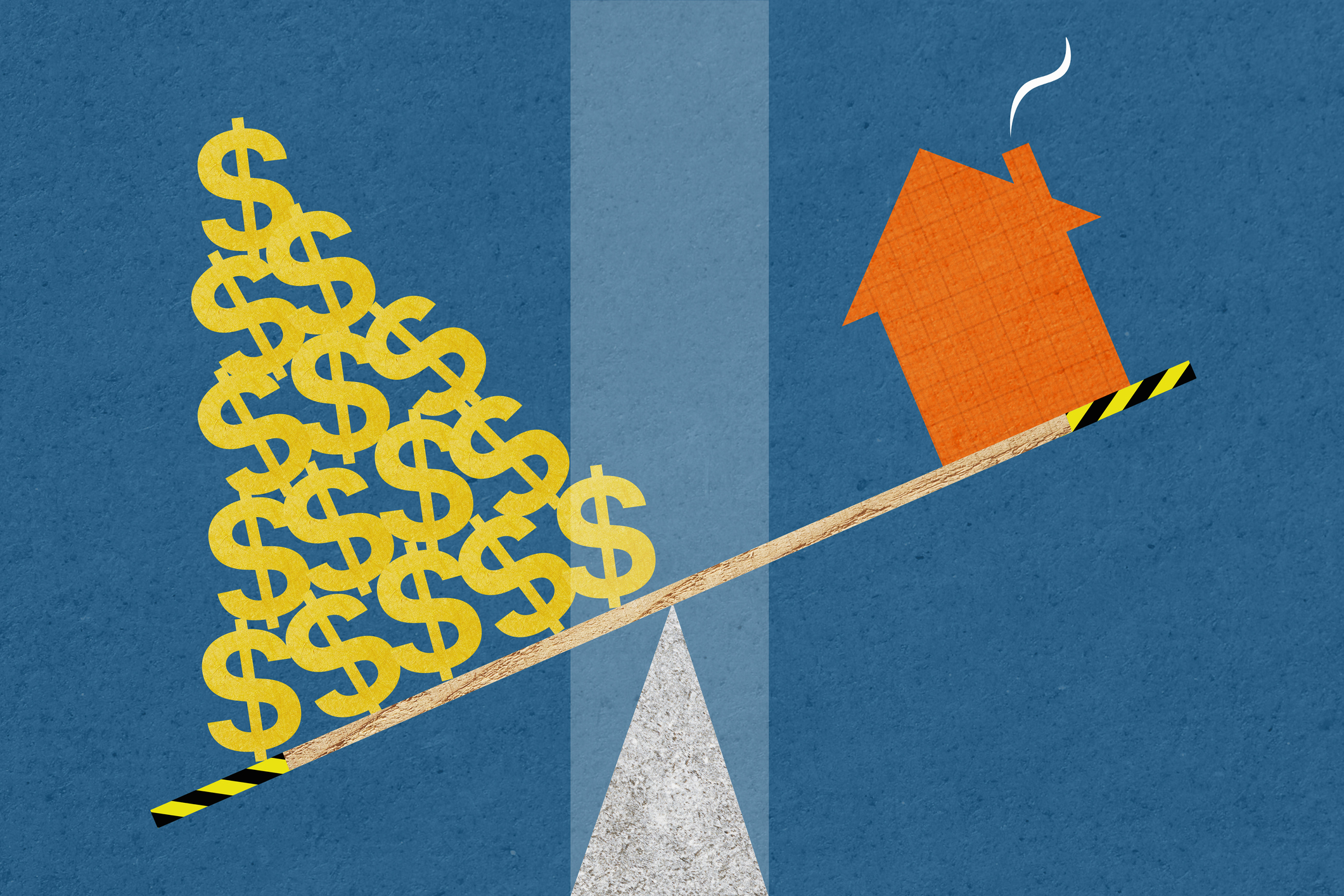States Where You’ll Pay Less Income Tax in 2023
Many states have lowered personal income tax rates for this year. Do you live in one?


Okay, no one likes paying income tax — i.e., the tax levied on your taxable income by some states and the federal government. For those working “traditional” jobs, income taxes are usually deducted from paychecks. That can be painful since income tax takes a significant chunk of your hard-earned every time you get paid, which goes directly to the government instead of your bank account. However, there is some good news regarding income tax this year. Several states have lowered personal income tax rates for 2023.
2023 State Income Tax Cuts
There are many political and economic reasons why states are cutting personal income tax rates. But whatever the reason, if you live in a state cutting income tax rates, you will likely get to keep more of your income to pay for necessities and splurges this year than you did last year. Here’s what you need to know about states with lower income tax rates for 2023.
- Some policymakers are concerned about massive state tax cuts given fears of recession.
- There are questions in some states about who (wealthy taxpayers or taxpayers with lower and middle incomes) will benefit from the various income tax cuts.
- And while only some states are listed here, several states are considering legislation to cut income taxes for 2024 and beyond.
Arizona
Arizona lawmakers passed legislation last year that cuts the state’s income tax rate to a flat rate of 2.5% from 2.98%. The new Arizona flat personal income tax rate wasn’t expected until 2024. But the lower rate is effective now (in 2023) due to higher-than-expected tax revenues.

Sign up for Kiplinger’s Free E-Newsletters
Profit and prosper with the best of expert advice on investing, taxes, retirement, personal finance and more - straight to your e-mail.
Profit and prosper with the best of expert advice - straight to your e-mail.
- Arizona previously had income tax rates for single people making more than $159,000 a year that ranged from 2.59% to as high as 4.5%. Under the new flat tax rate plan, taxpayers pay 2.5%.
- Former Arizona governor Doug Ducey reportedly said the new flat tax would save families about $350 a year. However, some advocacy groups believe the flat tax will be a windfall for Arizonans with higher incomes, who now pay the same income tax rate as households with lower incomes.
What is a flat tax? A flat income tax essentially means that everyone pays the same tax rate on their taxable income.
Arkansas
Individual income tax rates in Arkansas for 2023 are down from a top marginal rate of 4.90% to 4.70% effective January 1, 2023, due to changes in recent legislation.
Arkansas Gov. Sarah Huckabee Sanders signed the $124 million tax cut bill into law in April that also reduced corporate income tax rates for Arkansans.
Idaho
- Idaho used to have a top marginal income tax rate of 6%.
- But due to legislation, the state now has a flat tax rate of 5.8%.
In a statement about Idaho's historic tax cuts, Gov. Brad Little said, “The Idaho Legislature and I have worked together to achieve historic tax cuts for Idaho businesses and families, and we’re not done yet. We’ve turned back more tax relief per capita than any other state, with more property tax relief on the way.”
Indiana
Indiana passed legislation to eventually cut its 3.23% income tax rate down to 2.9%. The move is part of a $1.1 billion tax package signed into law by Gov. Eric Holcomb.
- The Indiana personal income tax rate cut doesn’t all happen in one year, however. (For 2023, Indiana’s income tax rate will be 3.15%.)
- Future Indiana income tax cuts will depend on whether state revenue targets are met.
Iowa
Iowa will also move to a flat tax, but this will happen in phases. Iowa had nine income tax brackets before Gov. Kim Reynolds signed tax reform legislation that will reduce that number to four tax brackets with a maximum tax rate of 6.0% this year.
- Previously the maximum tax rate for Iowa was 8.53%.
- By 2026, there will just be a flat Iowa income tax rate of 3.9%.
Kentucky
Kentucky Gov. Andy Beshear signed a massive tax cut bill into law, backed by Republican lawmakers. The income tax cut for Kentuckians became effective Jan. 1, 2023. As a result, the state’s income tax rate went from 5% to 4.5%.
- The latest bill signed by Beshear will bring the income tax rate down another half percentage point (to 4%) beginning on Jan. 1, 2024.
Michigan
Michigan reduced its flat individual income tax rate for 2023 from 4.25% to 4.05%. The reduction is due to a state law that automatically reduces the income tax rate based on the relationship between revenue growth and inflation rates. (If the state's general fund's growth exceeded the inflation rate, income tax rates would go down for 2023.)
Next year, however, absent legislative changes, Michigan's individual income tax rate will return to 4.25%.
Mississippi
Mississippi lawmakers want to repeal the state’s income tax. But for now, Mississippians have a flat income tax of 5% that doesn't apply to the first $10,000 of income.
Lawmakers have reportedly said that because of the tax cuts, a middle-income couple in Mississippi could save a little over $834 a year, while a single person with moderate taxable income could save over $400 a year.
- The income tax situation in Mississippi is notable in that the legislation technically repealed a lower 4% tax rate.
- In the next few years (by 2026), the 5% flat income tax rate is expected to fall to 4% through phased-down tax rate cuts.
Missouri
The top income tax rate (individual) in Missouri is down to 4.95% for 2023. (The previous individual income tax rate in Missouri was 5.3%.)
- Additionally, $1,000 is now exempt from individual income tax in the state. Previously, only $100 was exempt from Missouri’s individual income tax.
- The state has legislation in place to eventually reduce the top income tax rate to 4.5%, according to the Tax Foundation.
Nebraska
In Nebraska, individual income tax rates are down for 2023 from 6.84% last year to 6.64% this year. That income tax rate is expected to go down by small percentage points each year until a legislated rate is reached.
Note: State lawmakers have recently taken steps to slim down the tax cut for the state's top personal income tax rate. However, Nebraska is still proposing a little over $3 billion in income tax cuts over the next six years.
New York
In New York, middle-income earners have lower personal income tax rates this year than they did in 2022. Income tax rates for New Yorkers with income between certain thresholds that have historically been between 5.9% and 6.3% will now be between 5.5% and 6%.
Those changes weren’t expected until 2025 but were accelerated to become effective in 2023 through a $1.2 billion tax cut package, which will reportedly benefit 6.1 million New Yorkers.
North Carolina
North Carolinians have a new income tax rate of 4.75%, down from 4.99%. Over the last decade, North Carolina has engaged in major tax reforms. Those reforms mean that in the next few years (by 2027), the state will have a personal income tax rate of 3.99%.
However, Gov. Roy Cooper has recently proposed limiting the state's income tax cuts to people making less than $200,000 a year.
In March, Cooper tweeted: "We want to give the income tax breaks to working families, the people who need them. Not the wealthy and not the corporations. This budget recommends a personal income tax cut for families making less than $200,000 a year."
At the same time, state lawmakers have proposed an even lower income tax rate of 2.49% that, if approved, would be effective in 2026. But under Cooper's proposal, North Carolinians above the $200,000 income threshold would be taxed at the state's current income tax rate of 4.75%.
Utah
Residents of Utah benefit from a second consecutive year of income tax rate cuts.
For 2023, Utah's individual income tax rates went from 4.85% down to 4.65%. That rate reduction was enacted in March but is retroactive to January 1, 2023.
West Virginia
West Virginia is another state where lawmakers enacted legislation earlier this year to reduce income tax rates. West Virginians haven’t seen an income tax rate cut in more than thirty years. The top marginal rate in the state is now 5.12% down from 6.5%.
The legislation passed in March of this year contains a provision that could trigger additional tax rate cuts in future years, depending on state revenue.
Federal Income Tax Rates 2023
Of course, state personal income tax rates are only a piece of the puzzle. You also will have to deal with federal income tax rates. Those rates (10%, 12%, 22%, 24%, 32%, 35%, and 37%) don't change, but the federal income tax brackets tied to those marginal tax rates are adjusted yearly for inflation.
Get Kiplinger Today newsletter — free
Profit and prosper with the best of Kiplinger's advice on investing, taxes, retirement, personal finance and much more. Delivered daily. Enter your email in the box and click Sign Me Up.

As the senior tax editor at Kiplinger.com, Kelley R. Taylor simplifies federal and state tax information, news, and developments to help empower readers. Kelley has over two decades of experience advising on and covering education, law, finance, and tax as a corporate attorney and business journalist.
-
 Ask the Editor: Four Reader Tax Questions
Ask the Editor: Four Reader Tax QuestionsAsk the Editor In our Ask the Editor series, Joy Taylor, The Kiplinger Tax Letter Editor, answers questions related to IRAs and other retirement accounts.
By Joy Taylor Published
-
 Could You Retire at 59½? Five Considerations
Could You Retire at 59½? Five ConsiderationsWhile some people think they should wait until they're 65 or older to retire, retiring at 59½ could be one of the best decisions for your quality of life.
By Joe F. Schmitz Jr., CFP®, ChFC® Published
-
 Did Florida’s Chance at $1,000 in Property Tax Rebates Vanish?
Did Florida’s Chance at $1,000 in Property Tax Rebates Vanish?State Taxes The Florida Legislature bypassed Gov. Ron DeSantis’ wish to cut property taxes and instead voted to lower the state’s sales tax.
By Gabriella Cruz-Martínez Published
-
 How Caregivers for Adults Can Save on Taxes in 2025
How Caregivers for Adults Can Save on Taxes in 2025Tax Breaks Caring for your parent or spouse can be stressful, but the IRS offers tax breaks for qualifying taxpayers. Here they are.
By Kate Schubel Published
-
 New South Carolina Income Tax Cut Might Eat Your Cash
New South Carolina Income Tax Cut Might Eat Your CashState Taxes South Carolina’s flat income tax bill could have the majority of residents paying higher income taxes. Find out how.
By Kate Schubel Published
-
 Tax-Deductible Home Improvements for Retirement in 2025
Tax-Deductible Home Improvements for Retirement in 2025Retirement Taxes Your aging-in-place plan could benefit from the medical expense tax deduction. But watch out for capital gains and property taxes.
By Kate Schubel Published
-
 New Colorado Tax Credit: What’s the Scoop?
New Colorado Tax Credit: What’s the Scoop?State Tax Everything you need to know about the Colorado family affordability tax credit in 2025.
By Kate Schubel Published
-
 Key Family Tax Breaks Are on the GOP Chopping Block This Year
Key Family Tax Breaks Are on the GOP Chopping Block This YearTax Credits Several tax breaks, including the Child Tax Credit, may face reforms or be cut entirely as lawmakers seek revenue for Trump’s tax plans.
By Gabriella Cruz-Martínez Last updated
-
 What's Going on With New Jersey Property Tax Programs?
What's Going on With New Jersey Property Tax Programs?Property Tax ANCHOR and ‘Senior Freeze’ just got a refresh, and there’s a new program: Stay NJ. Learn how to save on New Jersey property taxes.
By Kate Schubel Published
-
 Five States With the Largest EITC Checks
Five States With the Largest EITC ChecksEITC Households in these states received a larger Earned Income Tax Credit (EITC) last year.
By Gabriella Cruz-Martínez Published